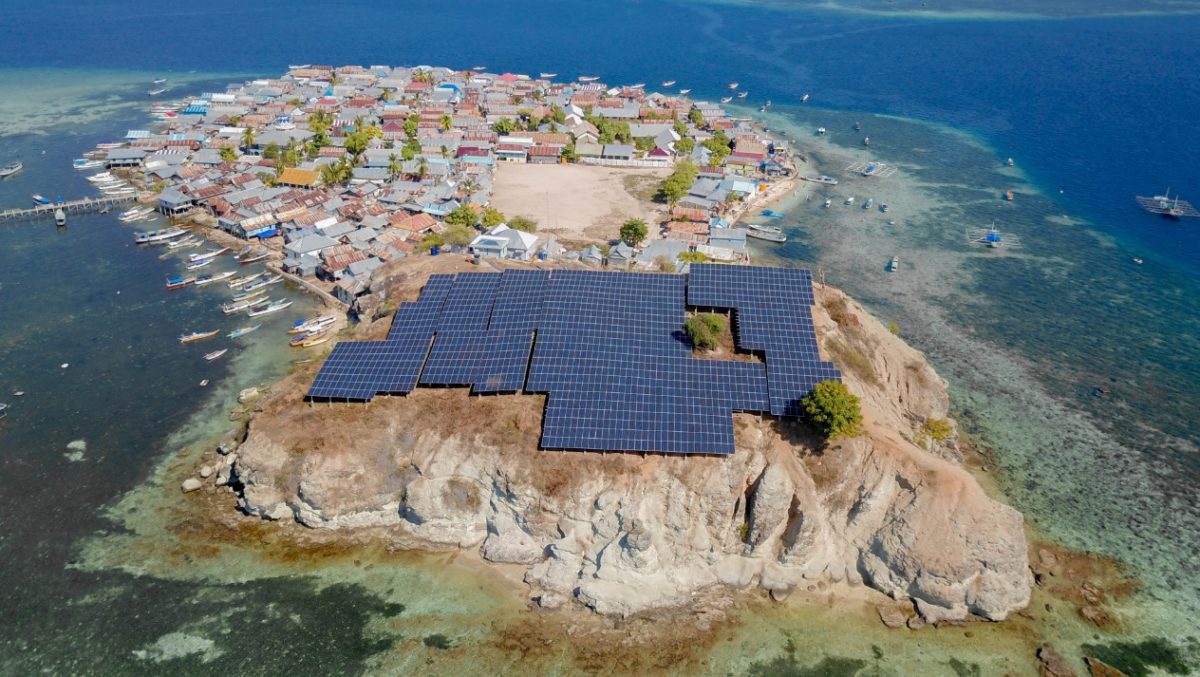Indonesia‘s Ministry of Energy and Mineral Resource has provided an update on the program run by state-owned utility PT PLN (Persero) to deploy solar-plus-storage plants across remote islands in the country.
According to the ministry, solar facilities totaling 5.3 MW and connected to an unspecified number of storage systems have been deployed across 17 islands to date. These include Palue (760 kW), Messah (530 kW), Gunung 490 (kW), Golo Lebo (440 kW), Parumaan (420 kW), Papagarang (380 kW), Nuca Molas (380 kW), Wontong (320 kW), Nangabere (270 kW), Mbakung (260 kW), Kebirangga Selatan (200 kW), Ranakulan (190 kW), Seraya 190 (kW), Kakasewa 140 (kW), Batu Tiga (120 kW), Legur Lai (150 kW), and Kalelu (100 kW).
The facility installed in Messah, an island in the country's southernmost province of East Nusa Tenggara, was built in 2019 and provides power to 467 customers, including households, businesses, and public entities, the ministry explained. The PV system has a capacity of 530 kW and relies on five bidirectional inverters, 27 inverters, and 590 batteries.
According to recent research from the Lappeenranta University of Technology (LUT) in Finland, the combination of solar and storage may help remote islands have a 60% share of renewables in their electricity mix.
In the paper “A review of 100% renewable energy scenarios on islands,” published in WIREs Energy and Management, the research group provides a holistic view of energy system studies for islands aiming at 100% renewable energy penetration and reviews all existing literature, including 97 scientific papers. “Detailed information on actions used on-demand as well as on supply-side are delivered,” it specifies. “In this context, there is no limitation regarding single technologies, energy system sectors, regions, or size of islands.”
According to the scientists, balancing the high variability of wind and solar resources via more dispatchable renewable energy technologies such as biomass and biofuels or storage will be crucial for realizing the 100% renewables target. “Further technologies providing the remaining required electricity are hydropower plants and pumped hydro storage, solid waste plans, and bioethanol plants,” they point out, noting that solar and wind may also be used to produce hydrogen for use on the islands themselves. “Bioethanol capacities have a crucial role in supply reliability and provide power in short periods of very low solar, wind, and biomass availability.”
After reviewing the existing research, the LTU researchers concluded that the target of powering islands with 100% renewable energy is technically feasible and economically viable. “This has been shown for several small islands as well as for large island states, independent of their geographic location,” they stated. “The role of electricity will become that of a primary energy source and the electricity sector is the backbone of any smart energy system.”
According to their findings, a 30% renewable share may become possible by building capacity and infrastructure while, for a 60% share, storage deployment will be crucial. Furthermore, sector coupling will be the final step to achieving a 100% target. “We found that there is still not the same common sense on multi-sectoral approaches for islands as it could also be found for energy systems transition in general. Full sector coupling studies are not yet the standard for 100% renewables islands, and a detailed industry sector inclusion is fully missing for islands,” they concluded.
This content is protected by copyright and may not be reused. If you want to cooperate with us and would like to reuse some of our content, please contact: editors@pv-magazine.com.




6 comments
By submitting this form you agree to pv magazine using your data for the purposes of publishing your comment.
Your personal data will only be disclosed or otherwise transmitted to third parties for the purposes of spam filtering or if this is necessary for technical maintenance of the website. Any other transfer to third parties will not take place unless this is justified on the basis of applicable data protection regulations or if pv magazine is legally obliged to do so.
You may revoke this consent at any time with effect for the future, in which case your personal data will be deleted immediately. Otherwise, your data will be deleted if pv magazine has processed your request or the purpose of data storage is fulfilled.
Further information on data privacy can be found in our Data Protection Policy.